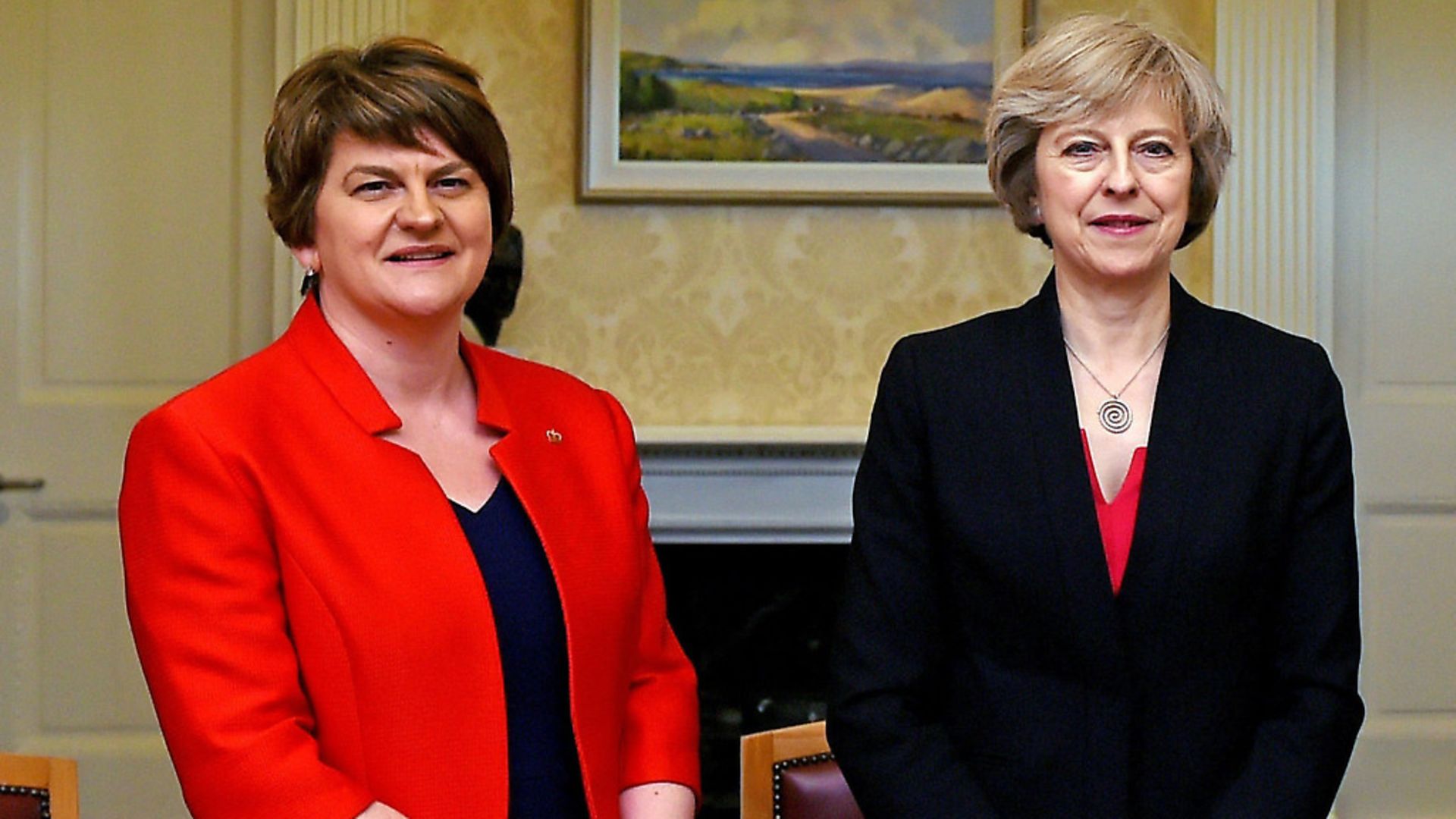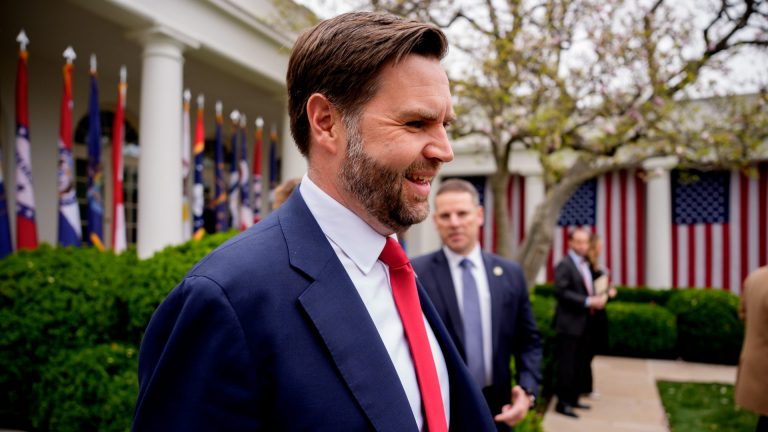
Anathema to many British voters and stereotyped as inflexible but the DUP have a deserved reputation for dexterity and find themselves as a wildcard in the Brexit mix
On the night of February 6, 1991, the then leader of the Democratic Unionist Party (DUP) truly earned the sobriquet ‘The Grand Old Duke of York’, a nickname that had been hanging around him for some time due to his propensity for making stirring calls to arms and then backing off when trouble erupted.
On that day – not for the first time – Rev. Ian Paisley made apocalyptic warnings of violence to come; warnings that, in truth, seemed more like threats than anything else. The difference this time? He did in on a hill. The party leader had assembled 500 of his supporters, all of whom were waving gun licences, on a hillside in Antrim with the implication that they were ready to shoot back. ‘I will take full responsibility for anything these men do,’ he said. ‘We will stop at nothing.’
The stunt was nothing new for Paisley, a man who felt history should bend to his will alone. Aside from the DUP he had also founded his own church, the Free Presbyterian Church, and effectively taken over the Independent Orange Order, a Protestant fraternal marching organisation that split from the traditional Orange Order. In the past he had also threatened, more than once, that his followers would take armed vigilante action against the Irish Republican Army (IRA), which at this time was still waging its campaign of violence.
In fact, Paisley himself bore a significant amount of responsibility for the outbreak of the three decade long ‘Troubles’ that engulfed Northern Ireland: in 1964, five years before the conflict began in earnest, he had threatened to lead a mob to the Catholic Falls Road district in order to remove a tiny Irish flag from the window of a Sinn Féin office. In the end the police did the job for him. The rioting that followed would prefigure years of street conflict that eventually saw the exhausted IRA regroup and the slow-burning civil war begin. It was those tumultuous, bloody early years of the conflict, from which the DUP sprang.
Paisley founded the party in 1971 and it was, for many years, a fringe group of Northern Irish unionism, the political movement which had, since the state was founded in 1921, been led by the Ulster Unionist Party (UUP).
While the UUP enjoyed wider support among Northern Irish Protestants loyal to Britain and opposed to the unification of Ireland, the DUP carved out a niche as a more radical pro-British force.
In fact, it carved out two niches: the backbone of its support was found in rural areas, primarily among fundamentalist Christians, but it soon found itself appealing to the urban loyalist working class.
Over time this meant that the party saw significant overlap with loyalist paramilitaries, armed groups who sought to reinforce British rule through violent action not only against the IRA, but often against Northern Irish Catholics in general.
For its part, the DUP always denied any associations with loyalist paramilitaries and, in truth, enjoyed a volatile relationship with them. Some within loyalism had long grown wary of Paisley as a result of his ‘Grand Old Duke of York’ tendencies.
Leading DUP figures, however, including the late Paisley and former first minister of Northern Ireland, Peter Robison, were involved in several attempts to found vigilante groups that bore a striking rhetorical resemblance to loyalist paramilitary outfits.
The party’s rural backbone, meanwhile, saw it engage in campaigns against gay rights and develop staunch opposition to abortion – though in Northern Ireland it is hardly an outlier on the abortion issue: the nationalist Social Democratic and Labour Party, which is allied to Britain’s Labour party, also opposes the extension of Britain’s 1967 abortion act to Northern Ireland.
Like the other Northern Irish parties, kept at arm’s length from UK politics, the DUP’s sudden appearance on the British electoral map has come as a shock to many: compared to British parties, the DUP seems like a collection of dinosaurs – ironically enough, perhaps, as ardent creationists can be found among its ranks.
Famously, the party opposed the 1998 Belfast Agreement, better known as the Good Friday Agreement, which saw the IRA give up its ‘armed struggle’ campaign of violence against the British state and its political wing, Sinn Féin, participate in the newly-formed Northern Ireland devolved Assembly that governs Northern Ireland in a similar fashion to the Scottish Parliament and Welsh Assembly.
It would be unfair to portray the DUP as a monolith, however; doubly so to suggest that it is an unchanging one. Paisley may have been a biblical literalist, but the party has at times shown itself to be surprisingly flexible – at least when it has the advantage.
Once the party had finally outflanked its unionist rivals in the UUP it settled down into government with its old adversaries in Sinn Féin – something the UUP itself never did. It also, in partnership with Sinn Féin, brought more stable government to Northern Ireland than has been previously managed by anyone. The process that allowed the DUP to do this was a relatively minor renegotiation of the peace process called the St Andrews Agreement. In time the IRA met the DUP’s key demand: that it disarm – though questions are raised from time to time as to whether the decommissioning of the IRA’s weapons has been total.
Such was the bonhomie between Paisley as first minister and deputy first minister, Sinn Féin’s Martin McGuinness, that the two sworn enemies came to be nicknamed ‘the Chuckle Brothers’. Striking stuff, given that McGuinness was an admitted former IRA commander.
After Paisley’s 2008 retirement, relations between the two parties cooled, with new leader and first minister Peter Robinson seeming less willing to put on a happy face for the cameras. The governing of Northern Ireland continued, however, despite tensions, both historic and new, between the two sides.
But what does it mean now that this party, very much still a fringe group by British standards, is in the position of deciding the fate of the entire UK government? It is a question that many have been asking. When the scale of Theresa May’s disastrous election result became clear many British voters, not to mention journalists, turned their eyes to Northern Ireland – in some cases for the first time ever.
In some respects, we have been here before though: this is not the first time that British politics has been propped-up from Belfast. When John Major’s government was under siege from eurosceptic Tory rebels in the 1990s it was a confidence and supply arrangement with unionists that kept the show on the road.
But that was the UUP. The DUP is something different altogether, a party anathema to many British voters, even Conservatives, precisely because it is so conservative. It may be wrapped in the Union Flag, but to many Brits, bowler hatted Orangemen seem more Irish than anything else.
The DUP, though, has totally eclipsed any more natural allies that the Conservatives might have once found on the other side of the Irish Sea. If it had simply retained its twin niches in farming communities and working class loyalist areas, it would not have become the biggest party in Northern Ireland – and yet it is, so what explains this phenomenon?
The answer is straightforward enough: since the peace process began, there has been no incentive to meet in the middle, except in the performance of the pantomime battles that replaced the very real violence of the past.
Part of the price of bringing the extremes into the fold was the promotion of those very extremes at the same time as they were themselves tamed. This happens in two distinct ways: firstly, representation in the devolved Northern Ireland is ‘consociational’. Parties must register as either unionist, nationalist or ‘other’, but the third category is meaningless, as the nature of the power sharing agreement requires a mandatory coalition of unionists and nationalists.
As one side grows, for example Sinn Féin replacing the Social Democratic and Labour Party (SDLP) as the main voice of nationalism, the other side is moved in the opposite direction, with unionists are pushed toward the DUP in order to maximise the unionist vote against nationalists.
This has no direct effect on votes in Westminster elections, but it does give both the DUP and Sinn Féin a dynamism that spills over into those elections: if a party is your choice in a regional election, it is also likely to be your choice in general elections.
‘It was always going to be this way,’ said Northern Irish commentator Newton Emerson. ‘As soon as all parties were pro-[Belfast] Agreement, there was no point in having slightly less sectarian parties.’
In other words, the nature of the peace process rewards big political blocs operating as grand coalitions within both unionism and nationalism, not small parties representing narrower sets of interests.
Secondly, a major factor in how Northern Irish politics works – and this will be seen in the Tory-DUP deal – is the division of spoils. The current and previous Conservative governments have been contentious in Northern Ireland precisely because their austerity agenda suited almost no-one.
Sinn Féin in particular sees itself as a left-wing party and has accused the DUP of supporting a Tory ‘austerity agenda’. But, in truth, the DUP is often ambivalent about cuts to public services, mindful of its working class urban supporters.
In addition, while the party is certainly socially conservative, it would be more accurate to say that the DUP not a liberal party – in either the social or economic sense of the word.
Mick Fealty, editor of the Northern Irish politics website SluggerOToole.com says some DUP voters are closer to Labour than they are to the Tories. ‘As Len McCluskey [general secretary of the Unite trade union] said, many of his members will have voted for the DUP,’ said Fealty.
The DUP’s ambitions are significant, but the are confined to Northern Ireland and the party is unlikely to seek to reverse any social policies in Britain. The cost for Theresa May may or may not include guarantees to not extend same-sex marriage and abortion to Northern Ireland, but they will certainly include demands that she get out the chequebook, not only guaranteeing the ‘triple lock’ on pensions as well as winter fuel payments, but also ensuring the British government replaces any lost EU peace and reconciliation funding as well as direct farm payments under the EU common agricultural policy.
The party will also, despite its historic reputation for bellicose unionism, be mindful of the fact that Northern Ireland remains a divided society. Not only would delivering fresh handouts from Westminster allow the party to poke Sinn Féin in the eye, a hard border between Northern Ireland is a no-no not only for Irish nationalists, but for the many unionist voting farmers who work with the massive cross-border agri-food processing sector.
Given this, then, a deal with the EU must be done on terms favourable to keeping an open border between Northern Ireland and the Republic. In the end – and if it lasts, which is very far from certain – this coalition of convenience between the Hard Brexiteers of the Tory party and the harder still Brexiteers of the DUP is likely, if anything, to soften Brexit.
Could the party end up aping the tactics of its founder, the Grand Old Duke of York – having walked all the way up the hill, could they head back down it again?









